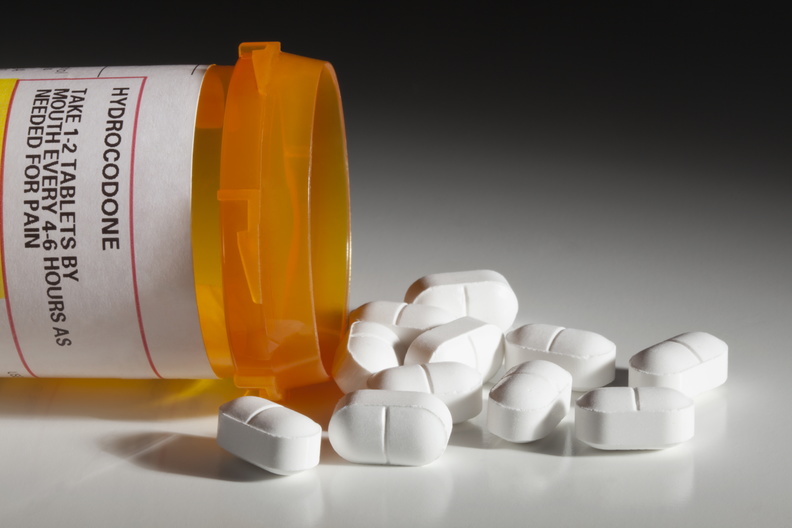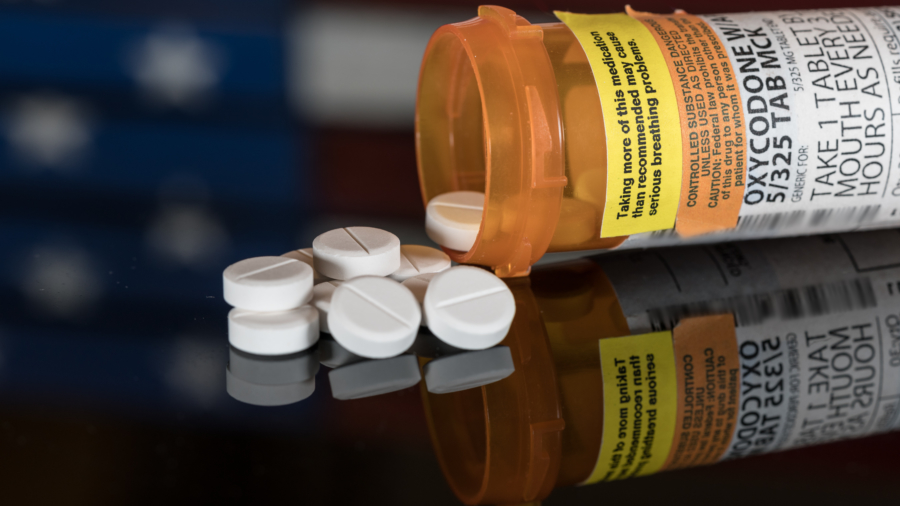An epidemic of addiction and death across the United States.
The use of opioid drugs has reached epidemic levels and has spread to every race, gender, socioeconomic class and nearly every age group of people in the United States. The Centers for Disease Control and Prevention (CDC) reports that these addictive drugs claim about 130 American lives on a daily basis and the numbers continue to increase annually. The question is, how did we as a nation get to this point and why?
What are opioids?
According to the National Institute of Health’s National Institute on Drug Abuse, “Opioids are a class of drugs that include the illegal drug heroin, synthetic opioids such as fentanyl, and pain relievers available legally by prescription, such as oxycodone (OxyContin), hydrocodone (Vicodin), codeine, morphine, and many others”.
Opium
Opium became available in the US in 1775, but we believe that it has used by man since 3400 B.C. when it was first recorded in writing. The drug comes from the opium poppy (Papaver somniferum) seed pod sap, that contains various amounts of alkaloids such as morphine, codeine, thebaine, and papaverine. In the U.S. in the 1800s, opium dens started to spring up in the west (San Francisco’s Chinatown) and quickly spread east to New York. This was because of immigration and trading with other countries that cultivated the poppies and then supplied the drug. Opioids (morphine) were used to treat soldiers in the 1860s during the civil war and many soldiers became addicted to them. The US Congress banned opium in 1905 and in the following year they passed the Pure Food and Drug Act. This act required labeling of the contents on all medications.
Heroin
The Bayer Company was the first to produce heroin and in 1898, there were producing and distributing this new “miracle drug” on a commercial scale. It was found that it controlled pain levels better than codeine and morphine. However, it was also discovered that patients were developing a tolerance to the drug and quickly becoming addicted. It was eventually banned but it’s use gradually increased until the 1970s. Since that time we have seen a ten-fold increase in heroin use in the U.S.
Prescription Opioids
The Harrison Narcotics Act in 1914 regulated opioids (and coca leaves) to limit their recreational usage and by the 1970s, the stigma of addiction led doctors to avoid prescribing opioids. They opted for surgical procedures to block pain signals instead. However, in the 1980s and 1990s, opioids began to be used again to treat pain from chronic diseases. This when we saw a spike in new pain medications being approved and prescribed.
Here, we can look at the timeline of opioids that have been approved by the US Food and Drug Administration (FDA) over the years:
1947 Methadone (methadone hydrochloride) was approved as an antitussive and analgesic. In 1972 it was approved for opioid addiction treatment.
1957 Darvon (propoxyphene hydrochloride) was approved.*
1972 Darvocet (propoxyphene napsylate, acetaminophen) was approved.*
1983 Vicodin (hydrocodone bitartrate, acetaminophen) was approved.
1987 MS Contin (morphine sulfate) was approved. First opioid that allowed dosing every 12 hours instead of every 4-6 hours.
1989 Percodan (oxycodone HCI, aspirin) was approved.
1990 Duragesic (fentanyl transdermal system) was approved. First opioid “patch” that was designed to be worn for 3 days.
1995 OxyContin (oxycodone controlled-release) was approved. The first formulation of oxycodone that allowed dosing every 12 hours instead of every 4 to 6 hours.
1998 Actiq (fentanyl citrate) was approved. First pain medicine approved to treat cancer breakthrough pain.
1999 Percocet (oxycodone and acetaminophen) was approved.
*Darvon and Darvocet were banned in 2010.
Most of these have become common household names, but they didn’t start that way. Many were originally designed and prescribed for severe acute pain. Prescriptions were written in very limited quantities or were mainly used in hospital settings. But by the period of 2012-2016, the sales data that was analyzed by the FDA shows that products that were sold from manufacturers to pharmacies and other settings, revealed that sales to retail settings accounted for the majority of the annual opioid analgesic sales (>80%) and injectable formulations accounted for less than 0.2% of those sales. This means that there has been an enormous shift in the sales of these drugs from in-patient settings (hospitals) to outpatient settings (pharmacies), to then be dispensed to the general public. This peaked in 2011 with doctors writing 238 million opioid analgesic prescriptions annually.
Opioid Addiction
There are some staggering statistics when we look at the number of individuals that are diagnosed with opioid use disorder (addiction) in the United States. The National Institute on Drug Abuse provides us with annual figures that include the effects that this has on public health and social and economic welfare. They estimate that nearly 1.7 million people in the United States suffer from substance use disorders related to prescription opioid pain relievers and 21 to 29 percent of all patients that are prescribed opioids for chronic pain will misuse them. Unfortunately, opioid deaths are the reality of opioid drug misuse. The CDC also has stated that around 68% of the more than 70,200 US drug overdose deaths in 2017 involved an opioid.
Opioid Deaths
We know that in the 1990s there was growing pressure in the health care industry to treat pain more aggressively and as a result, pharmaceutical companies focused on the development of new pain medications. These companies also marketed the drug aggressively to doctors. They were marketed as safe medications that provided long-term relief. These doctors were told that less than 1% of all patients that were prescribed medications abused them and they should be prescribing more to help their patient in pain. Many critics believe that there was a concerted effort by the pharmaceutical companies to mislead the public and physicians about the dangers.
Since then, millions of Americans have abused prescription opioids. The federal government reports that more than 130 people now die each day from opioid overdoses, though not all of those drugs were obtained by prescription. A study published in the Harvard Review of Psychiatry found that the death rate from opioid misuse is 6 to 20 time greater than that the general population.
The CDC estimates that the total “economic burden” of just prescription opioid misuse in the United States is $78.5 billion a year. This includes the costs of healthcare, lost productivity, addiction treatment, and criminal justice involvement. Because of this economic burden, local and state governments believe that the pharmaceutical companies should pay for the cost associated with this epidemic. Public officials hope for an outcome similar to the massive tobacco settlement of the 1990s.
Opioid Lawsuits
In an effort to reduce risk and maximize the benefits of available pain treatment options, the CDC issued comprehensive guidelines for prescribing opioids for chronic pain outside of cancer treatment, palliative care, and end-of-life care. These prescribing recommendations stated that non-opioid treatments are preferred as the first step for treatment of chronic pain. As a result of the attempts by the CDC to change opioid prescribing patterns, they have been opposed primarily by indirect intervention. This has been done by the pharmaceutical industry through lobbying and advocacy groups.
A coalition of 41 states’ attorneys general has filed lawsuits against five major opioid manufacturers (Endo International, Janssen Pharmaceuticals, Teva Pharmaceutical Industries Ltd./Cephalon Inc. and Allergan). Subpoenas have been served and they are seeking information about how these companies marketed and sold prescription opioids. This group also served a supplemental investigative subpoena to Purdue Pharma.
The coalition is also demanding documents and information related to distribution practices from three drug distributors (AmerisourceBergen, Cardinal Health and McKesson). According to reports by the Drug Channels Institute, these three companies had more than $400 billion in revenue in 2016 and manage about 90% of the country’s national drug distribution.
Forbes recently published an article that stated that they believe that “opioid lawsuits on par to the become largest civil litigation agreement in U.S. history”. To date, there are numerous lawsuits that have been filed in relation to the opioid crisis. The largest case to date is one filed in the US District Court of Ohio, in which municipalities from across the country are seeking damages from this opioid crisis. The judge, in this case, Dan A. Polster, has called the opioid epidemic a “man-made plague, twenty years in the making” and has refused a motion by drug companies to dismiss the case. He is urging both sides to come to an agreement in what could amount to billions of dollars.
References:
https://history.house.gov/Historical-Highlights/1901-1950/Pure-Food-and-Drug-Act/
https://www.cdc.gov/drugoverdose/epidemic/index.html
https://www.ncbi.nlm.nih.gov/pubmed/11862675
https://www.accessdata.fda.gov/drugsatfda_docs/anda/98/74769ap_appltr_prntlbl_chemr.pdf
https://www.accessdata.fda.gov/scripts/cder/daf/index.cfm?event=overview.process&ApplNo=020747
https://www.accessdata.fda.gov/scripts/cder/daf/index.cfm?event=overview.process&ApplNo=018248
https://www.accessdata.fda.gov/drugsatfda_docs/anda/99/40-330_Oxycodone%20and%20Acetaminophen.pdf
https://www.accessdata.fda.gov/scripts/cder/daf/index.cfm?event=overview.process&ApplNo=010997
https://www.accessdata.fda.gov/drugsatfda_docs/nda/pre96/007337-S24_Percodan_toc.cfm
https://www.accessdata.fda.gov/scripts/cder/daf/index.cfm?event=overview.process&ApplNo=088058
https://www.accessdata.fda.gov/scripts/cder/daf/index.cfm?event=overview.process&ApplNo=017122
https://www.fda.gov/downloads/AboutFDA/ReportsManualsForms/Reports/UCM598899.pdf
https://www.drugabuse.gov/drugs-abuse/opioids/opioid-overdose-crisis#two
https://journals.lww.com/hrpjournal/Abstract/2015/03000/Long_Term_Course_of_Opioid_Addiction.3.aspx

Tracy R Everhart, MSN, MS CAM
For more than 20 years I've had the opportunity to work in numerous rolls within the medical field, including the last 7 years as a professional medical writer. With an undergraduate degree in biology/microbiology, postgraduate education in allopathic and complementary alternative medicine, my education has afforded me career opportunities with direct patient care, medical research and clinical oversight of statewide projects to improve the health of patients of all ages. I have a broad and deep knowledge of illnesses and conditions that can affect the human body. Even more important is that I have learned traditional treatment methodologies combined with alternative forms, to make the most informed decision about options that may be available.

Get A Free Opioid Case Review
Did you or a loved one suffer from Opioid addiction after receiving an opioid prescription for pain from a doctor?


